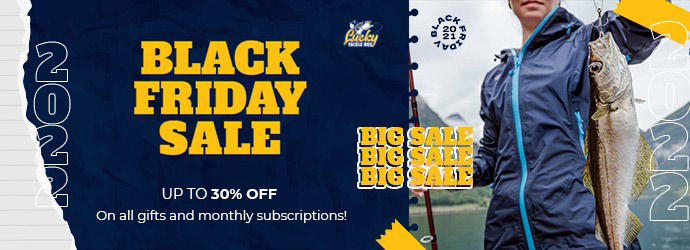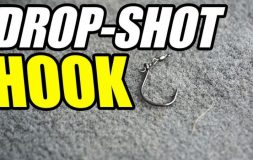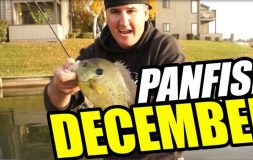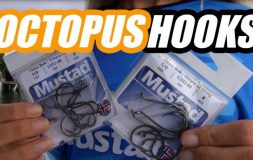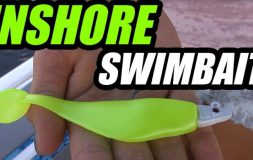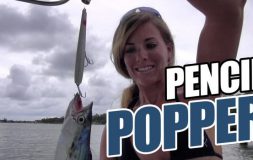The neko rig vs. the wacky rig: How to rig different baits to get more bites
At Lucky Tackle Box, we provide the FULL angler experience. Not only do we ship you new baits every month, but we also teach you different rigging techniques so you can adapt to any fishing condition. In Travis Moran’s latest video, he covers everything you need to know about the Neko Rig and the Wacky Rig – two of his personal favorites!
According to Travis, the rig you use makes all the difference: “There are times when finesse tactics are the key to getting more bites, but some finesse tactics are best fished vertically and some are best worked along the bottom.” Even though the same bait is used for each technique, the way you rig it will allow you to adapt seamlessly to various water conditions.
In the video, Travis shows exactly how to set up the Neko Rig and Wacky Rig, when to use each rig, and how to cast them out for maximum impact. After watching, you’ll have all the information you need to become a more versatile angler! Here’s a closer look at each presentation:
- 1. Neko Rig
- a. The Neko rig is weighted so that as the bait hops along the bottom, the tail end will stick up, which entices the bass to bite. First, slide an O-Ring halfway down the bait. Then, put a nail weight in the head, and then skin the hook underneath the O-Ring with the hook tip towards the tail. This will keep the bait hopping along the bottom with the tail up – to a bass, it’ll look like something that’s nosing around for it’s own dinner, not aware that it’s about to become a meal itself! This is especially effective when you make full casts along or across targets and let the bait sink to the bottom, slowly shaking the rod as you work the bait back.
- 2. Wacky Rig
- a. With the Wacky rig, you should throw it in an area where bass are under the cover of a structure, wiggling the bait near the bottom and enticing the bass to bite. You slide that O-Ring on just like you do with the Neko rig, but this time you have the option of using a weight or no weight. So, if you want to use that weight, you’ll put it in the middle of that bait for a faster fall, or if there’s a little breeze and a little heavier bait is necessary. Then we’re going to take the hook and we’re going to put it through the small loop on that O-ring. This will let the ball vertically with both tails wiggling on the way down.
As always – thanks for the great advice, Travis!
At Lucky Tackle Box, it’s always our goal to equip you with the information you need to develop your fishing skills with the great stuff we ship out every month. Do you have a favorite rigging tip or technique? We want to know! Tell us below in the video comments – maybe Travis will learn a thing or two from you! ;).
This month’s box theme is Pre-Spawn, so stay tuned for upcoming videos and social media posts to help you get the most value out of your March box. Tight lines, anglers!
+++
Lucky Tackle Box – Neko Rig vs. Wacky Rig Video Transcription
There are times when finesse tactics are the key to getting more bites, but some finesse tactics are best fished vertically and some are best worked along the bottom. So today I’m going to talk about the Neko Rig and the Wacky Rig. And even though the same tackle is used for each technique, when you rig them differently, you can fish the various situations that you run into out on the water.
What’s up guys? I’m Travis Moran with Lucky Tackle Box and today we’re going to break down these two techniques starting with rigging.
(00:27) All right, setting up these two techniques is extremely important. So, let’s start with the Neko Rig. First, we’re going to slide an O-Ring halfway down the bait. Then we’re going to put a nail weight in the head, and then we’re going to skin hook the hook underneath the O-Ring with the hook tip towards the tail. This will keep the bait hopping along the bottom with the tail up.
Next up is a Wacky Rig. We’re going to slide that O-Ring on just like we did before. But this time we have the option of using a weight or no weight. So, if we want to use that weight, we’re going to put it in the middle of that bait for a faster fall, or if there’s a little breeze and we need a little heavier bait down there. Then we’re going to take the hook and we’re going to put it through the small loop on that O-ring. This will let the ball vertically with both tails wiggling on the way down.
(01:19) For both setups I like about an 8 to 10-pound mono or fluorocarbon. Or if you want, you can use braided line with a fluoro leader like I’m using here around this nasty structure and cover I’m fishing today. And then I’m using the Hybrid Spin from Stix Fishing, which is a 7’2 medium, moderate fast-action rod. This has enough backbone to battle fish, but the perfect amount of tip to work the bait and really feel those subtle bites.
All right, so now that we know how to rig these baits, let’s talk about how to throw them, starting with the Wacky Rig. We’re going to cast to specific targets and let that bait sink all the way to the bottom, watching our line the entire time for a bite. Once it gets to the bottom, we’re going to lift that rod tip up and give it a little shake and let it fall back down to the bottom. What this bait is doing when it’s falling is both ends of that bait are wiggling on the way down and that pulls bass out of the cover and structure that they’re in and entices them to come out and eat it.
Now, usually they’re going to bite it on that initial fall, but sometimes they’ll come out and just nose up to it as it falls down. That’s why we’re giving it that second little lift and shake so we can hopefully get them to bite on that one.
(02:29) Now, one extra note, if you’re seeing that you’re getting bit on that second lift, try throwing in a third and fourth lift because sometimes these fish are a little sluggish and they need a little bit more enticing to bite.
Next up is the Neko Rig. What we’re going to do is make full casts across or along our targets and let the bait sink all the way to the bottom. With the rod tip up and semi tight line, we’re going to shake the rod as we slowly work the bait back. Reel in any excess line and keep shaking. The idea is to keep the bait hopping along the bottom with a head down and the tail up looking like something that’s nose down searching and really not paying attention to what’s going on and a bass sees an opportunity for an easy meal and they cannot resist.
All right, now let’s talk about where to throw these baits. Early morning, low light, fish are scattered. They can be caught on a wide variety of reaction baits and things, but when that sun really starts to come up high in the sky, these fish, they’re going to suck up closer to shade from structure or cover or they’re going to move off shore into deeper water and that’s where these two baits are going to excel.
(03:44) All right, so this lake here today, I’ve got all kinds of brush, trees, tulies all along the bank that come anywhere from 10 feet to 20 feet out here in the water and creates a great line here for these fish to use. And as this sun has come up throughout the day, it’s going to hold these fish back up in these little shade lines. So, as I’m working this bait along here, I’m casting to these little targets and I’m letting the bait sink down in front. And now as that bait is wiggling on the way down, it’s a great way to get the fish’s attention and it’s a slow moving little bait, so it’ll slowly pull that fish out and generate hopefully a strike.
Now the other thing is I’m taking note, I want to try to cast at as many different targets that I see. So right here I’m casting out in front of this tree. My next cast, I’m going to put one in the shade over here in front of these tulies. And the idea is that I want to take note to where I’m getting my bites. As I fish these different pieces of structure and cover and I maybe get bit out in front of these tulies, I want to take note, is it green, lush tulies? Or is it the dead overhanging tulies that are in? Or is it a tree, a big tree?
And the more I put together those little details, the more that I can go run that pattern throughout the lake. So if I’m getting bit out in front of trees like this, then I want to either go target more of those trees or when I get to another tree along the bank, I want to spend a little bit more time fishing that.
(05:22) Now for the Neko Rig, I can target some of these high percentage deeper offshore spots like the point that I’m fishing right here or some nice little flats, different areas that are going to hold these fish later in the day when they’re a little more sluggish and they need to be enticed with a little bit more of a finesse technique. So, what I’m doing is I’ll change the angles of my cast. The first cast I made up a little bit shallower on this point. The next one was out from deep to shallow and now I’ve moved out a little bit deeper and I’m casting another one right across. I’ll play with the different angles and see what helps me keep this bait along the bottom and really present it the most efficiently.
When it comes to finesse techniques, understanding the different rigging options to fit the conditions you’re fishing are a huge key to help you continuously adapt and keep catching fish. Having the terminal tackle for the Wacky Rig and the Neko Rig are keys to being prepared.
Well, I hope this video helps you put more fish in the boat this season. If you like these videos, make sure you leave a comment below. I love hearing from you guys. Once again, I’m Travis Moran with Lucky Tackle Box and I’ll catch you out on the water.
Check out this monthly fishing box subscription and enjoy more videos. You’re also getting all the best lures mentioned in our materials.


